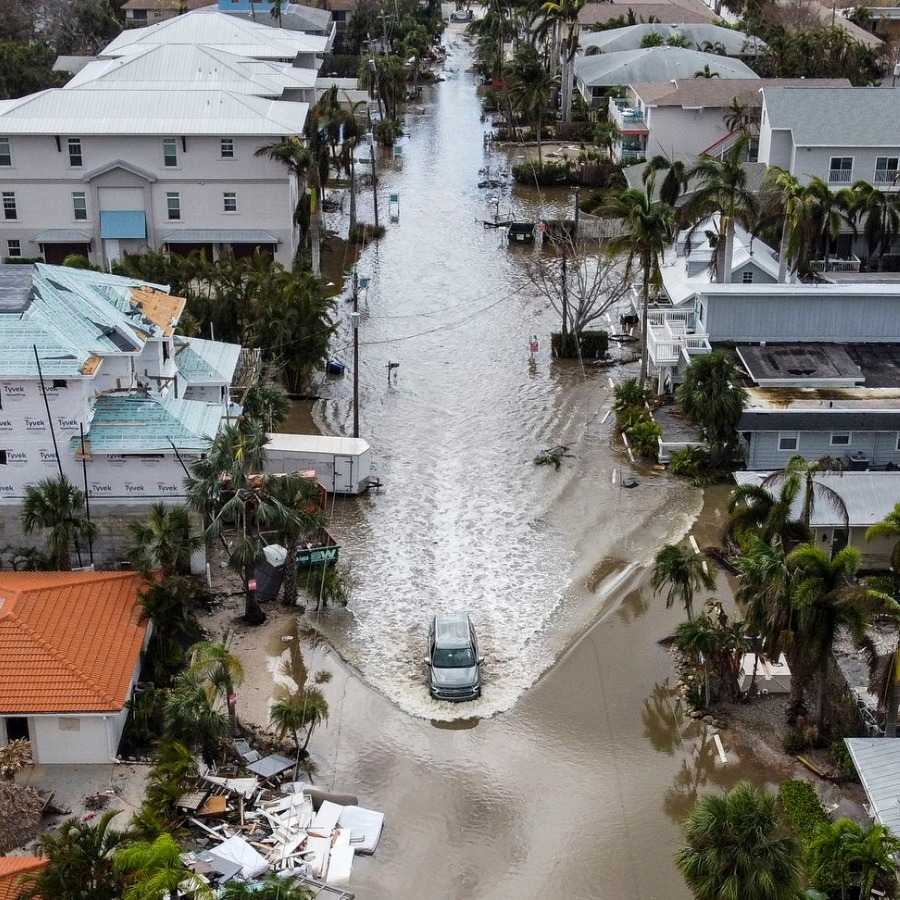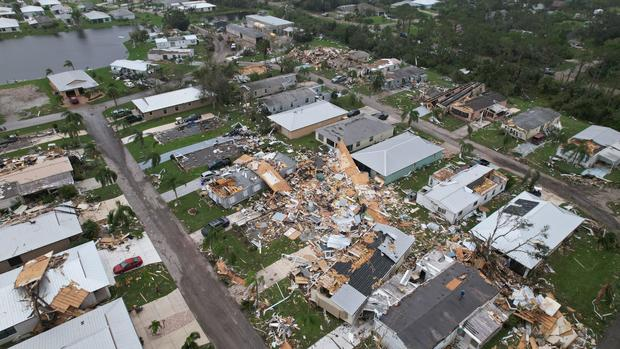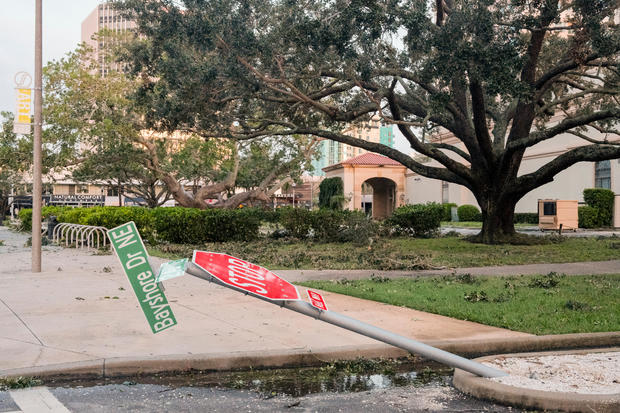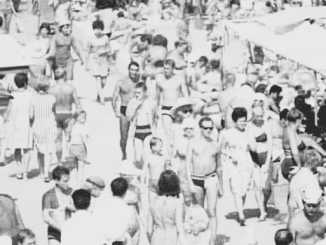Hurricane Milton, the most powerful storm of 2024, has left a devastating impact on Florida, transforming once-bustling communities into desolate wastelands. Although the storm weakened slightly before landfall, it caused significant destruction across the state, bringing with it violent winds, torrential rains, and catastrophic flooding. The hurricane veered south of Tampa Bay, sparing the city from a direct hit, yet widespread devastation remains. As Florida picks up the pieces, the death toll continues to climb, and millions remain without power.

In this article, we’ll explore the extent of the damage left in Hurricane Milton’s wake, the toll on lives and communities, and the state’s path to recovery.
Hurricane Milton Makes Landfall: A Night of Destruction
Hurricane Milton made landfall just south of Sarasota at 8:30 p.m. on Wednesday, battering Florida’s central Gulf Coast. The storm packed winds over 140 mph, and although it weakened slightly upon landfall, it still unleashed severe weather across a wide area. Residents braced for the impact, but nothing could prepare them for the devastation that unfolded. At least 14 people lost their lives, with six of those deaths occurring when tornadoes struck St. Lucie County on the central Atlantic coast.
The combination of hurricane-force winds and tornadoes tore through neighborhoods, ripping off roofs, shattering windows, and leveling homes. Power lines were downed, and approximately 3 million residents were left in the dark. One of the storm’s most dramatic scenes played out in St. Petersburg, where a crane collapsed onto a high-rise building, underscoring the hurricane’s immense force.
Devastation Across Florida’s West Coast
The storm’s fury was particularly devastating for coastal communities. St. Pete Beach saw entire blocks flattened by the hurricane’s winds, leaving nothing but rubble. Further north, in Hillsborough County, flooding stranded over 700 residents, who were later rescued by emergency teams. Cars were submerged, trees uprooted, and streets transformed into rivers.
“We’ve never seen anything like this,” said a local resident in Bradenton, where residents navigated through streets littered with fallen trees and tangled power lines. One haunting image captured a car barely making its way under a leaning tree, a stark reminder of the hazards that remain even after the storm has passed.

Tornadoes and Floods: A Double Threat
Milton’s power extended beyond its fierce winds; it also spawned several tornadoes along the east coast, adding to the destruction. In St. Lucie County, two tornadoes swept through on Wednesday evening, catching residents by surprise and resulting in multiple fatalities. In Cocoa Beach, a beauty salon was reduced to rubble by a tornado, with workers returning to salvage what they could from the debris.
While tornadoes ripped through structures, flooding proved to be equally deadly. As rain poured down, waterways overflowed, flooding streets and homes. In low-lying areas, the floodwaters rose so quickly that residents were forced to flee with little more than the clothes on their backs.

Damage to Iconic Landmarks: Tropicana Field Hit Hard
Among the most striking casualties of Hurricane Milton was Tropicana Field, home to the Tampa Bay Rays. The stadium, recognized as the world’s second-largest cable-supported dome, suffered extensive damage. Before-and-after images show the once-proud structure now barely recognizable, with sections of the roof torn away and the field submerged. The Rays’ season had already concluded, but the stadium’s destruction serves as a stark symbol of the storm’s intensity and the daunting task of rebuilding that lies ahead.
Beyond Tropicana Field, other landmarks also suffered. A baseball stadium lost its fiberglass roof, and parks that once teemed with life are now littered with debris. These beloved places will require significant repair and restoration, leaving locals wondering when their communities will return to normal.
Governor DeSantis: ‘This is Not the Worst-Case Scenario’

Despite the widespread devastation, Florida Governor Ron DeSantis offered a measured perspective on the situation. Speaking at a press conference on Thursday morning, DeSantis acknowledged the severity of the destruction but also noted that the state had avoided the worst possible outcome. The storm’s slight veer south of Tampa Bay spared the densely populated area from the brunt of the impact, potentially saving countless lives.
“Thankfully, this is not the worst-case scenario,” DeSantis said, expressing gratitude that areas most vulnerable to catastrophic flooding were spared from the hurricane’s full force. Nonetheless, the governor warned that recovery efforts would be extensive, with certain areas requiring weeks or even months to return to some semblance of normalcy.
Rescue Efforts and the Ongoing Struggle for Survival
Rescue operations have been underway since the storm passed, with teams working tirelessly to reach those stranded by floodwaters. Hillsborough County saw over 700 people rescued from flooded homes and neighborhoods. Teams waded through waist-deep water, assisting families and pets to safety. For some, returning home is not an option, as the flooding has rendered their homes uninhabitable.

Local authorities continue to monitor areas still prone to flooding as rivers and creeks swell from the rainfall. Emergency shelters have been set up across the state, providing temporary refuge for those displaced by the storm. While the immediate threat has passed, the long road to recovery has only just begun, with many facing the daunting task of rebuilding their homes and lives.
A Broader Impact: The Toll on Florida’s Infrastructure
Hurricane Milton’s destruction has extended beyond homes and businesses, with Florida’s infrastructure bearing a significant hit. Roads and bridges have been damaged, impeding travel and complicating rescue efforts. Crews are working around the clock to restore power to millions of Floridians, but downed power lines and damaged substations are slowing progress. The state’s power grid faces an immense challenge as workers race to repair and restore critical services.

Transportation has also been severely disrupted. Several bridges along the west coast remain closed due to structural concerns, making it difficult for residents to return home. Additionally, debris has clogged highways and local roads, creating traffic backups and delays. The storm’s impact on transportation infrastructure underscores the need for swift and effective rebuilding efforts to support the recovery process.
Moving Forward: Rebuilding Florida’s Future
As the floodwaters recede and the initial shock fades, Florida faces the monumental task of rebuilding. Homes, businesses, and critical infrastructure will need repairs or complete reconstruction, and the scars of Hurricane Milton will linger for years. For many residents, the path forward will involve more than just physical recovery—it will mean healing from the trauma of loss and displacement.
Communities are banding together, with neighbors helping neighbors clear debris, share resources, and begin the arduous process of restoration. Aid organizations and government agencies are mobilizing resources to support recovery efforts, and volunteers are stepping in to assist those most affected.

While Governor DeSantis emphasized that the state avoided the worst-case scenario, the storm’s impact remains a stark reminder of Florida’s vulnerability to powerful hurricanes. As the state looks to rebuild, discussions about strengthening infrastructure and improving emergency response capabilities are likely to intensify. Hurricane Milton’s devastation serves as both a cautionary tale and a call to action for Florida to invest in resilient communities that can withstand the forces of nature.
Conclusion: A Changed Florida, But a Resilient Spirit
Hurricane Milton has left its mark on Florida, transforming vibrant neighborhoods into scenes of destruction. Yet, amid the rubble, a spirit of resilience emerges. Floridians are no strangers to hurricanes, and the communities affected by Milton will rally together to rebuild, support one another, and ultimately emerge stronger. As the state faces the long road to recovery, the story of Hurricane Milton will serve as a reminder of both the power of nature and the enduring strength of the human spirit.


